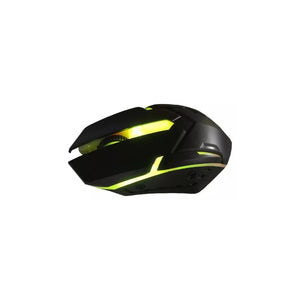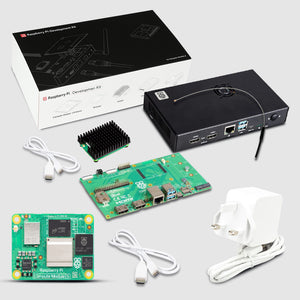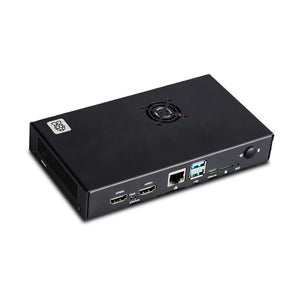On May 24, 2021, Raspberry Pi officially announced its latest product, the second-generation Raspberry Pi PoE+ HAT, on the market for under $20, and it quickly became popular within the IT community.

This strong upgrade will provide a better power supply than the Raspberry Pi PoE HAT it replaces. A strong 25 mm x 25 mm brushless fan was used by the creators of the second generation Raspberry Pi PoE+ HAT to cool the microcontrollers Raspberry Pi 3 B+ and Raspberry Pi 4.
The majority of Raspberry Pi developers are continuously debating whether or not they should upgrade their Raspberry Pi PoE HAT. This post is for you if you are one of them. Without further ado, let us delve deeper into the hardware of the Raspberry Pi and the importance of both goods.
Raspberry Pi PoE+ HAT Vs. Raspberry Pi PoE : Input Voltage, Power output, efficiency
The Raspberry Pi PoE+ HAT is the clear victor in terms of pure hardware specifications. In comparison, the Raspberry Pi PoE HAT has a maximum power of 25.5 W, while the Raspberry Pi PoE HAT has a maximum power of 15.4 W, which is over a 50% increase in maximum power.
The highest output current of the Raspberry Pi PoE is 2.5 A, and the Raspberry Pi PoE+ HAT also takes the top spot with a maximum output current of 5A.
The Raspberry Pi PoE also includes a feature called "current sense," which informs the user about the Raspberry Pi's current consumption. The Raspberry Pi PoE lacks current sense, which reduces its efficiency when compared to the Raspberry Pi PoE + HAT.
|
Specification |
PoE+ HAT |
PoE |
|
Standards supported |
802.3af, 802.3at |
802.3af |
|
Output voltage |
5V |
5V |
|
Maximum output current |
5A |
2.5A |
|
Maximum power |
25.5W |
15.4W |
|
Fan |
Yes |
Yes |
|
Current sense |
Yes |
No |
|
Transformer design |
Planar |
Wire-wound |
|
PCB |
4 layers, 2oz copper |
4 layers, 2oz copper |
|
Price |
$20 |
$20 |
|
Compatible with |
Raspberry Pi 3B+, 4B |
Raspberry Pi 3B+, 4B |
Upgradation in Raspberry Pi PoE+ HAT
If you're part of the IT community and keep up with the latest electronics news, you're probably aware of the global shortage of semiconductors, which is preventing Raspberry Pi from releasing Raspberry Pi PoE on a timely basis. It would have no effect on the Raspberry Pi's other goods, but it will have a significant impact on the Raspberry Pi PoE.
Raspberry Pi does not intend to phase out the Raspberry Pi PoE because it is used by many industrial applications. The Raspberry Pi Foundation's engineers are aware of the market and its consumers, which is why they devised a plan to revamp and remodel the Raspberry Pi PoE, allowing them to smooth out the supply while maintaining the device's efficiency.
Raspberry Pi has announced the product in the market for the first time even before the stock arrives in the channel. The decision to release the improved Raspberry Pi PoE+ HAT early allows industrial users to learn about the product and migrate to the Raspberry Pi PoE+ HAT. People can purchase the Raspberry Pi PoE+ HAT from approved resellers starting in June.
Raspberry Pi PoE Vs. Raspberry Pi PoE+ HAT : Price
The Raspberry Pi Foundation strives to build low-cost products so that more people may learn programming and electronics. The Raspberry Pi developers not only improved the Raspberry Pi PoE, but they also kept the $20 pricing same for users. One of the most powerful things that developers came up with was the "Ideal diode" rectifier, which uses a Microchip PD70224ILQ device to minimise heat dissipation. As we can see, there are numerous advantages to choosing the Raspberry Pi PoE+ HAT over the Raspberry Pi PoE.
Transformer - Wire wound vs. Planar
Just don't think of a big transformer like the one depicted in the title, or a small wire-wrapped ferrite ball like the one used in the first PoE HAT. PoE, or Power over Ethernet, requires the usage of a transformer to provide voltage conversion and isolation in order to function effectively.
The predecessor, Raspberry Pi PoE, employed a wire bound transformer design for PoE implementation, but this was replaced with a Planar Transformer over time. The planar transformer adds a few functions to the Raspberry Pi PoE+ HAT, which are listed below.
High power density
- Improved heat dissipation capability with Greater surface area
- Reduction in winding area than its old HAT
- Winding structure facilitates interleaving
- Excellent reproducibility, enabled by winding structure
- Greater magnetic cross-section area
Which HAT should I buy?
Both the Raspberry Pi PoE and Raspberry Pi PoE+ HAT are excellent solutions for consumers, in our opinion. You can figure out what your demand is and which HATs are most likely to meet it.
The primary idea behind the PoE HAT is to reduce installation costs and develop a project that both HATs can easily complete. Raspberry Pi recognised every user's requirement and not only met them, but also developed and enhanced the product to make it far more advanced and valuable. The Raspberry Pi PoE+ HAT can be used in a variety of projects, including security, inventory management, and any other project that improves overall efficiency while saving money.
Many customers contact us with questions or concerns regarding new technologies or difficulties with their products. Raspberry Pi is always working on new products that will help the tech community make the future a better place. You can use their products to improve the features or efficiency of your initiatives, which will benefit the entire planet. The new Raspberry Pi PoE+ HAT will be available in June, so in the meantime, leave a comment below with your favourite Raspberry Pi PoE and projects that you've created with PoE technology. Develop some projects and mentioned down below to make more people aware of the ways that can be opened from Raspberry Pi PoE+ HAT that no one thought of. Our team would greatly appreciate your efforts and if needed suitable guidance would be provided.








